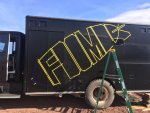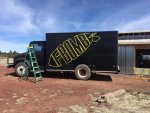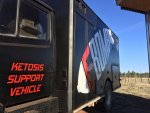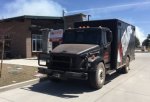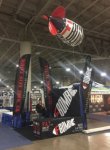Well, it's been electrical play time. We drove to Salt Lake City with the winch installed, but not connected. Granted, we never went (far) off road and this was a highway trip... but still, I hated having it half done. So, I got that done and made lots of progress in the cab.
First, the winch. I removed the solenoid control box and mounted it underneath the driver's door. The 4 cables which run to the winch are #1 welding cable with marine terminal ends (which I picked up last year at a marine supply store in Oregon... far too long ago!). The terminals are crimped with a cheap crimper I got on Amazon. I've used the "hit it with a hammer" anvil crimpers and those work fine. But, damn, for under $30 delivered it's a really nice tool. Here's the link:
https://www.amazon.com/gp/product/B00MVE48Z6/ref=oh_aui_detailpage_o02_s00?ie=UTF8&psc=1
And a photo, as I was making up cables at the kitchen table...
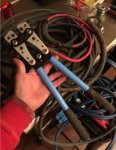
The cables run from the winch to the control box, mounted on a vertical panel next to some other electrical plugs - what the heck are those for? It looks like they're all blanks. Anyway, from this spot I can plug in the handheld control and sit in the cab or reach the front or stand behind the door. The control box is connected, when needed, with a plug linking it to the batteries (in the box right below this location).

Being able to disconnect the winch is a good idea. And, as a bonus, I have a set of jumper cables with that same connector. I'd cut the alligator clips off a set years ago and this lived in my prior Dodge truck... I could plug it in at a mating connector in the grill, where I had a winch receiver. If I need to jump someone or, worse, need a jump I can plug in and hook up. Or, better, hook up and plug in?
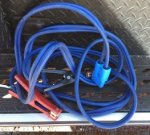
One project done, then on to the one I've been avoiding. The center console in this rig was about 20 inches wide and probably 22 inches tall. The sidewalls, inside, were lined with terminal strips and the floor had large gauge cables and terminal blocks, the middle was a mass of wiring, and the lid had an *** ton of switches... not of all which are needed now. To put the center seat in, with some foot room, I needed to remove a lot of stuff and make what remains more compact.
Here's what remained, after removing the console itself.
<cool, scary photo goes here... but upload is barfing... I'll try tomorrow, from the office>
Clearly, those exposed terminal strips would be a problem when I make a much lower tunnel/footrest. So, I removed them and replaced them with crimp connectors which could be bundled and moved without danger of arcing. Every now and then, especially when working with wires marked with some important need (lights, ignition, etc) I powered everything up to make sure it all still worked. Better to do that as I went than to find out at the end that something didn't work.

Then on to the switches... another mass of wires.
<photo and more to come in another post... I may have hit the limit here>



